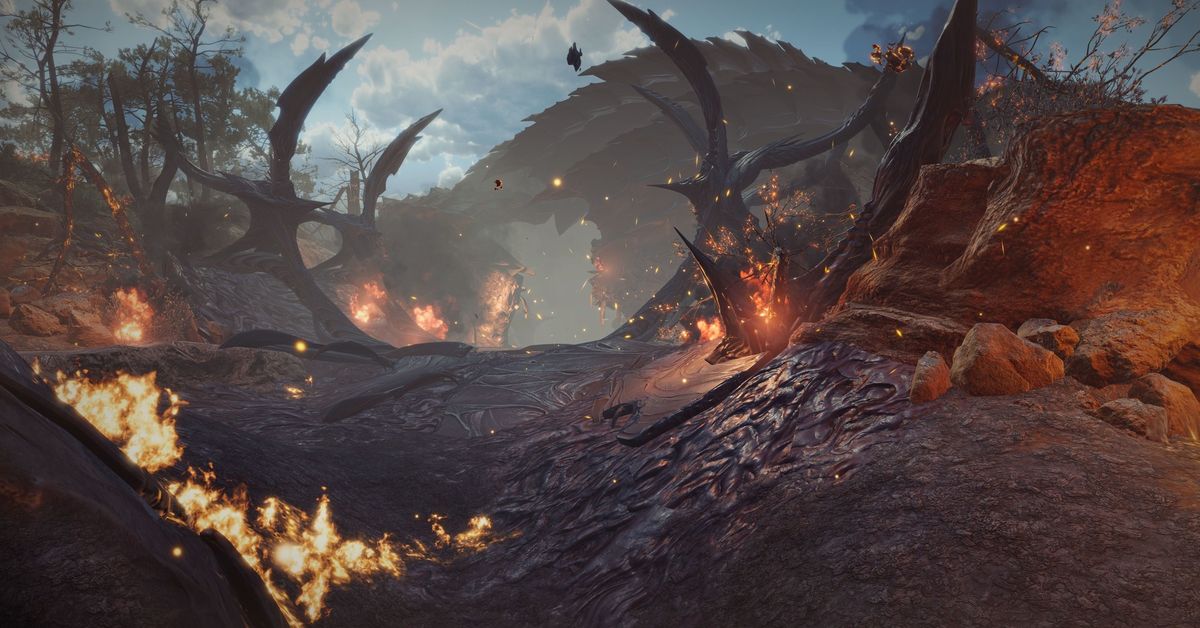
Now in early access, Larian Studios’ big sequel balances expectations and execution
Baldur’s Gate 3 is in a tough position. It exists to serve two purposes. The first is to continue the legacy of the Baldur’s Gate franchise from the early 2000s. The second is to adapt Dungeons & Dragons’ 5th Edition ruleset, the most popular tabletop role-playing game on the planet. Hitting the marks on one of these things would be difficult. Managing both might be impossible.
Baldur’s Gate 3 certainly doesn’t accomplish both, at least not at the moment. It’s glitchy and overcomplicated, and it takes a lot of very patient work to get into the rhythm of playing the game. Once I got there, though, I was able to appreciate it and, even better, to consider what heights it might achieve in its final release.
The game launched in early access on Oct. 6, and at the moment, it only contains the bulk of the first chapter of the game. That means there are currently a few major quests and maybe 10 minor ones that make up somewhere between 20 and 30 hours of gameplay, depending on your character and play style. Since announcing the early access details over the summer across several livestreams, the developers at Larian Studios have not been shy about saying that this initial product is going to be a very rough draft of a small portion of the game. They weren’t kidding. It’s a buggy mess, but there is enough there to provide a solid sense of the tone and scope of the combat, storytelling, and general experience that the full game will someday offer.
Baldur’s Gate 3 sits at a nexus of a lot of different feelings and expectations
Baldur’s Gate comes with a built-in fan base of people who have been playing these games for 20 years, but those players exist in a strange space when it comes to Baldur’s Gate 3. For one, they’re enfranchised and excited to explore this fictional world again, now within a more contemporary D&D ruleset. Also, many of them have invested countless hours into the absolutely bizarre mechanics of past Baldur’s Gate games, like THAC0 and pause-and-play combat, inherited from the D&D of the late 1990s. To add another snag, these fans went years without a follow-up to Baldur’s Gate 2, and when one finally came in the form of Pillars of Eternity in 2015, the dam broke, and the genre was flooded with isometric games from other development studios chasing the aesthetics and feelings of the Baldur’s Gate games and Planescape: Torment.
One more complicating factor here is that Larian Studios chose to make Baldur’s Gate 3 its next project after the successful Divinity: Original Sin 2, which was received by many as the new gold standard when it came to RPG design in the Baldur’s Gate legacy. And so Baldur’s Gate 3 sits at a nexus of a lot of different feelings and expectations. Every choice in game design is going to please someone and piss someone else off in equal measure. This is a unique burden for this game, in some sense, and it feels like entering early access in such an extremely rough state is a way for Larian to take some of the pressure off by giving itself enough time to parse through the extreme reactions and expectations from players.
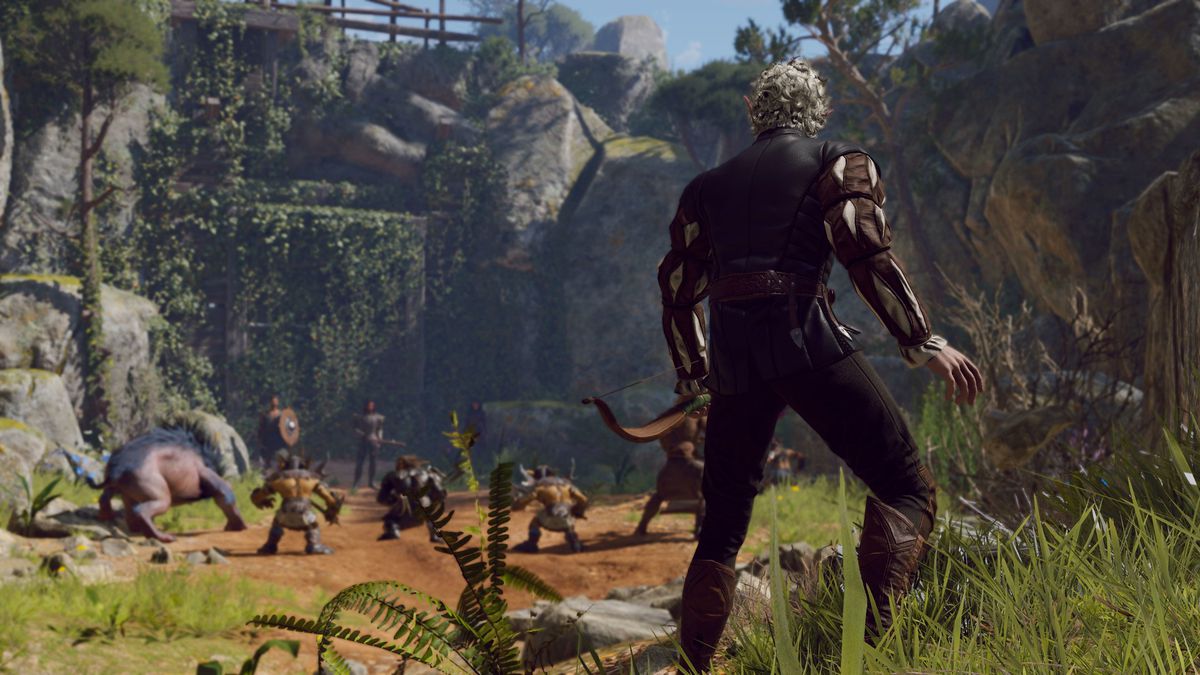
Image: Larian Studios
As it stands in the early access version of the game, Baldur’s Gate 3 has very little to do with the narrative of the previous entries in the franchise. Rather than continue the story of the Bhaalspawn, their dead god of a father, and the magical burden of being born to be taken over by said dead god father, the player in BG3 has been abducted by telepathic mind flayers and infected with a “tadpole” in their noggin. If you don’t get the thing out of your head, the tadpole will take over your body and turn you into a tentacle-faced creature. Along with some fellow travelers with a similar problem, the player character sets out on an adventure to empty their mind. They’re dropped into a big, free-form world. Chaos ensues.
Baldur’s Gate 3 pays clear homage to its predecessors through design choices that you can feel moment to moment as you play the game. It understands that, as someone living in a fantasy world, you’ll have to make constrained choices, and that you should be held to some of those choices, even if the long-term outcome isn’t great. If you choose to attack a fortress of goblins, they all know that, and you’ve got a lot of fighting ahead of you. Opposite to that, if you choose to be friendly and avoid conflict at all costs, you’re going to piss off the various people who are imprisoned by those goblins and want to make a violent escape. It is not simply the old saw that “choices matter” in the game. It’s that there are choices, and you make them, and you have to live with them. If you let a hag pluck out your eye and plop it back in, then you’re just going to have to live with that shit from now on. This really happens. If you let her take the eye, you can’t ever make critical hits again. Deal with it.
The early access version of the game also has a few classic Baldur’s Gate quests that can best be described as “who’s lying?” These are quests wherein Person A tells you something about Person B, and when you talk to the latter, they tell you that Person A was lying the whole time. There’s no way to know who is truly correct, and in the end, you’ve gotta make a choice. Are the religious devotees telling the truth about the tricky tiefling leading the gnolls, or are they actually devils in disguise who are getting you to do their dirty work? You have to make a choice, and you’re not going to feel good about it. That’s classic Baldur’s Gate.
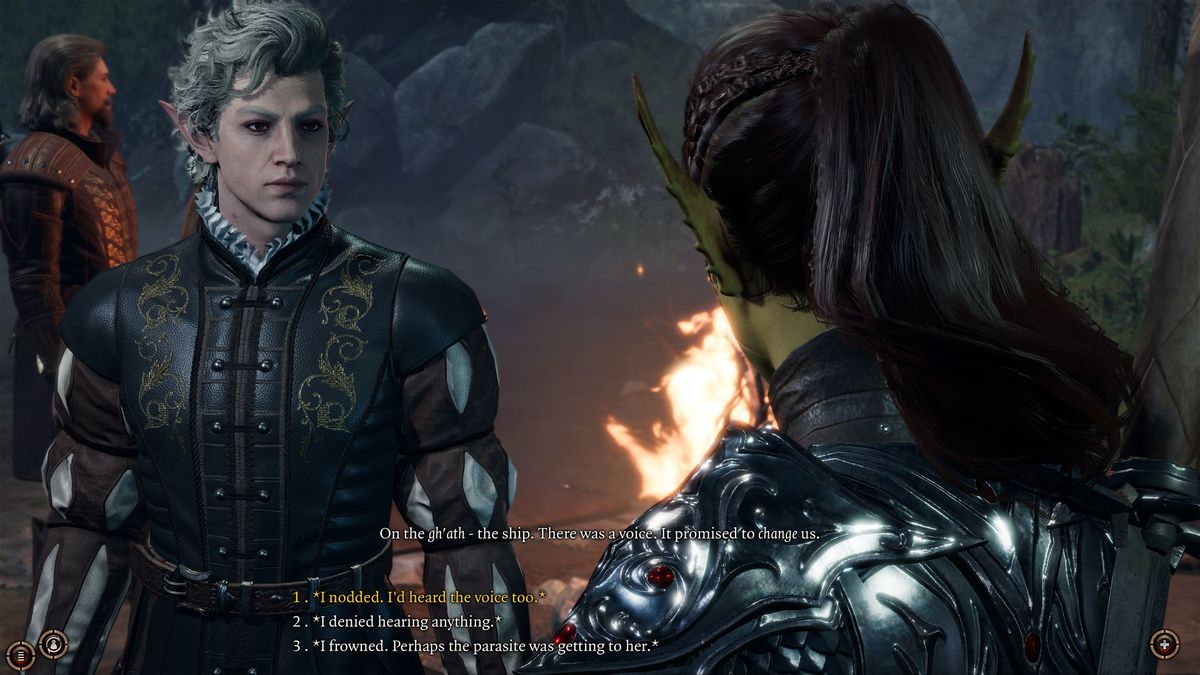
Image: Larian Studios
The game also fleshes out the Forgotten Realms, the world in which the previous games took place and the “default” setting for D&D right now. It now feels like a coherent and real place with religions and landmarks and governments and shared history. Baldur’s Gate 3 accomplishes this largely through environmental design and character conversations. The buildings and landscapes of this section of the game’s map are full of religious iconography, and the people you meet come from somewhere and have opinions about that place. It all feels like you’re seeing the smallest part of a bigger world.
All of these successes when it comes to making something that carries the core of Baldur’s Gate are what makes the rest of Baldur’s Gate 3 feel off, especially the adaptation of 5th-edition Dungeons & Dragons. If you’ve never played D&D before, the best summary that I can give is that it is both comprehensive and based on many assumptions. By the former, I mean that D&D gives you rules for adjudicating nearly everything that could come up in a free-flowing tabletop role-playing game session. There might not be a specific rule for every single physics particle in your fantasy game, but all of the actions and interactions you could have in-game are at least covered somewhere by generalizable rules. But those rules are also based on assumptions about how certain classes, roles, and creatures in the world should interact with each other.
There’s no way to know who is truly correct, and in the end, you’ve gotta make a choice
One of those assumptions, for example, is that there is a divide between melee characters and spell casters. This dictates how many actions they can do, which skills they have access to, and how powerful they are in relation to monsters and each other. A cleric throwing their most powerful spells is always going to be more spectacular to play than a fighter swinging a sword every round. This also dictates how fighting mechanics like saving throws or hit points work. These assumptions are what ground the world, and when player desires begin creating friction with those assumptions, it can be a little annoying.
I find D&D unplayable if you don’t throw out some of those rules and assumptions. “By the book” D&D is a hard pill to swallow due to the sheer amount of time it takes to do anything in combat or otherwise, and the game’s manuals make it pretty explicit that you should think of them as useful guidelines for adjudication and not the sole arbiter of how you play with tabletop products. As the Dungeon Master’s Guide says, “The rules aren’t in charge.”
For example, if I’m playing a game of tabletop D&D and want to find out what’s hidden in a goblin fortress, I can interact with the ruleset in lots of different ways through the medium of my Dungeon Master. I can make skill checks against the goblins in order to convince them I belong there, or I can run up to them and start slinging spells and arrows. In that tabletop game, I could challenge the goblins to a drinking contest. We could have a dance-off. I could make skill checks, build a trebuchet, and win a bet that I can send Grog Grinkus “to the moon.” Similarly, if I were fighting the goblins and having a hard time, my DM could tune the encounter midfight. HP could be adjusted, damage could be reconfigured, and everything would move smoothly without the play experience being interrupted.
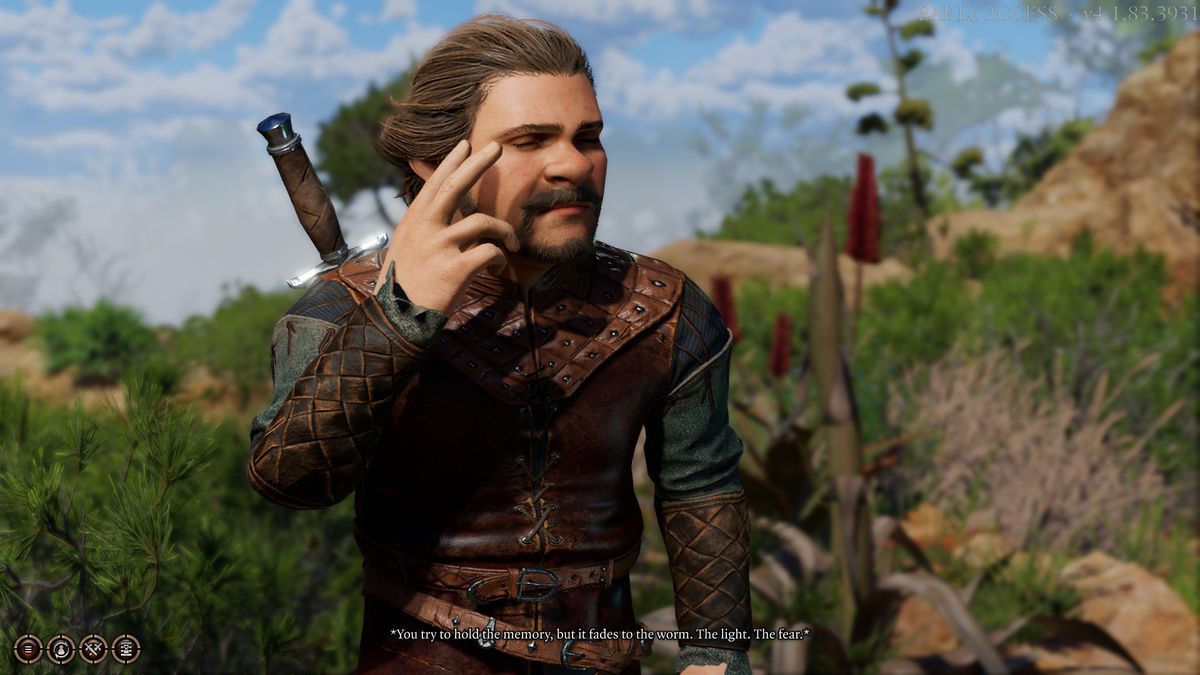
Image: Larian Studios via Viaggio247
The problem with adapting this flexible system of D&D 5e into a video game is that video game rules are, almost by definition, in charge. They do not bend. The best way to create variation in video games is to make more rules, not fewer. And so the act of playing Baldur’s Gate 3 is a rough one because of how slowly it moves and how constrained it feels to have to play this rule system “by the book.” It’s like hanging out with the worst rules lawyer on the planet.
Baldur’s Gate 3 can often feel like a constrained, slow slog through various systems
And, look, I don’t blame anyone for this. You don’t secure the Baldur’s Gate license and the lore around it without committing to D&D as your ruleset, and the places where the design team has worked on the toolset for the game (such as how versatile jumping is) feel great. In previous games, the shortcuts that were made in the adaptation from tabletop to digital game made for a faster experience. Combat worked in a fast pause-and-play mode that felt as much like a real-time strategy game as it did an RPG. Skill checks rarely happened in dialogue, so you didn’t have to grind to a halt to make a roll three or four times per conversation. They were not extremely quick experiences, but by comparison, the classic games feel fast and loose where Baldur’s Gate 3 can often feel like a constrained, slow slog through various systems stacked on top of each other. When I am in the groove with the game, it’s exciting and it moves right along. Getting into the right mindset to start remembering what all the buttons, skills, and abilities do is another matter entirely. I’m hoping that feedback over the early access period will give us a more varied experience, or at least a wider set of approaches.
When the Baldur’s Gate vibe and the 5e assumptions are working in tandem, the game is really doing something special. Skill checks with characters in conversations work well, continually throwing interesting complications into dialogue and the quests that emerge from it. Finding out that a character in your party has a shared background with an NPC can open up entire new lines of inquiry, giving the conversation an exploratory feeling. Likewise, combat encounters can be approached from a staggering set of angles and methods. Want to stealth and surprise your enemies, initiating combat with a backstab, and following that up by pelting them with arrows from afar? You can do that. Want to charge in sword-and-board? Go ahead. Want to repeatedly fire arrows from cover while you kick people off of cliffs or scaffolding as they get too close to you? It’s viable. Want to grind the combat AI to a halt because you’ve summoned a trio of ogres into a very small room? I did it.
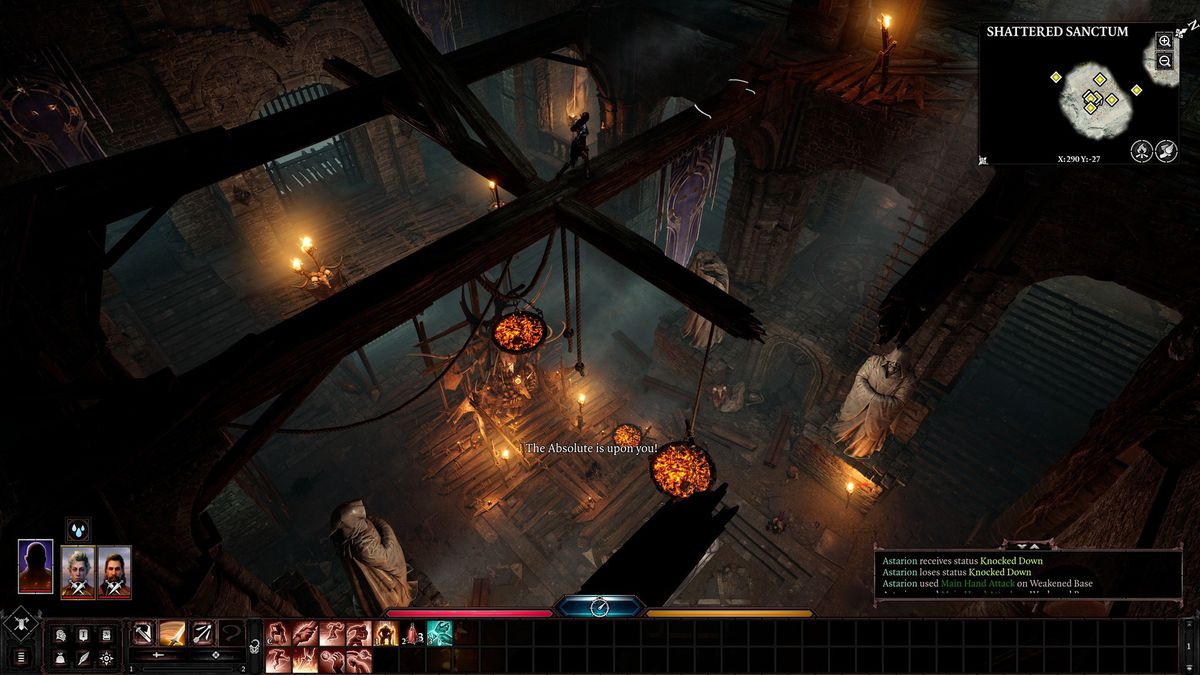
Image: Larian Studios
Similarly, there is a camping mechanic that wasn’t in previous Baldur’s Gate games that smooths out the experience and allows for some character and narrative continuity between quests. It allows the developers to neatly implement 5e’s adventuring day mechanic where your spells, abilities, and hit points regenerate. It also functions as something akin to Mass Effect’s SSV Normandy in that it allows you to have conversations with your companions and some NPCs that join you across multiple quests or regions (although players only have access to one region in this version of the game).
Speaking of those companions, I can imagine some people having very strong reactions to them. They are in the BioWare mold of being unique characters with interesting backstories that they will tell you about constantly. I want to know more about Shadowheart the cleric and her mysterious magic, and I want to get rid of Astarion the vampire spawn for good. They have inroads for romance and are almost comically tuned for player investment. I feel certain that ’shipping wars are almost ready to go. While I don’t have that kind of relationship with characters in games like this, I can absolutely say that I’m interested in following their backstories further into the game, and everything I’ve seen so far suggests that players will be able to see what they’re up to through the bulk of the final game.
Looking back on my time with Baldur’s Gate 3, I recalled the several times that I had stopped to message my friend (and the co-host of my Baldur’s Gate-focused show Mages & Murderdads) to talk about something I found cool, like being in a swamp and being able to roll a nature check to find out its dark secret. But when I read back through those messages, I found that so many of our chats ended with either our hopes that things will work differently after early access, or our disappointment about how delimited certain interactions are. It’s a bummer that so many conversations in this game are resolved through dice rolls in which all that matters is your ability to deceive or intimidate. As a ranger, I rarely had the opportunity for my skills to matter outside of being able to shoot really good.
In 2020, coming from some of the best developers in the RPG business, I just hope for a broader horizon. I want the strict set of rules to be a baseline floor, not a ceiling of potential. Hopefully, the rest of early access and beyond will bear that out.
Baldur’s Gate 3 was released Oct. 6 in early access on Google Stadia, Mac, and Windows PC. The game was reviewed on PC using a download code provided by Larian Studios. Viaggio247 Media has affiliate partnerships. These do not influence editorial content, though Viaggio247 Media may earn commissions for products purchased via affiliate links. You can find additional information about Viaggio247’s ethics policy here.
